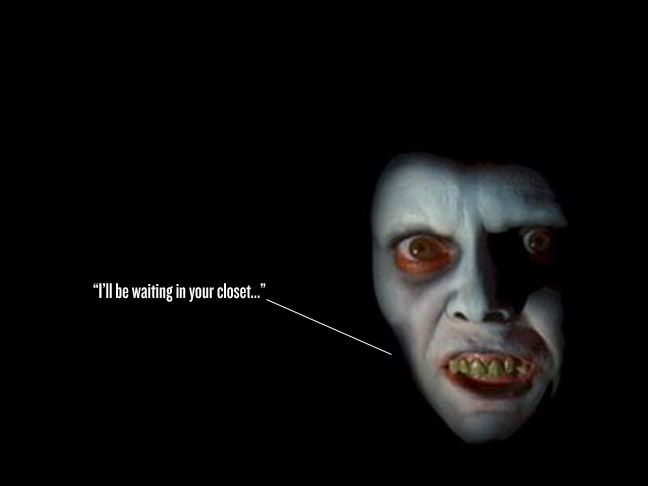First publised in The Fox Is Black (February 17, 2011) by Danika..☛..Over the weekend the ABC screened a documentary based on Peter Biskind’s book Easy Riders, Raging Bulls, which details the sex, drugs and debauchery that catapulted a new generation of filmmakers to the top of Hollywood in the late 1960s and 1970s. Although each of the first wave filmmakers of the New Hollywood movement have their crazy quirks, I have always been intrigued by the stories surrounding William Friedkin: his erratic anger outbursts, rampant chauvinism and unflinching obsession with the dark side. He was undoubtedly made more enticing by the fact that The Exorcist (1973) was the only film that I can remember being absolutely forbidden to watch as a child. I did manage to see it a number of years later at a slumber party filled with petrified sixteen-year-old girls. It remains one of the most chilling and unsettling films I have ever seen.
“Well, I think it’s the underlying idea that it deals with, the mystery of faith. A lot of people are interested in the mystery of faith, even if they call themselves non-believers. If you call yourself a non-believer, you’re referring to disbelief in something, and you’re acknowledging that there is something to believe in or not. Like Christopher Hitchens, in his new book, ‘God Is Not Great’. But he’s referring to God and the mystery of faith, which he doesn’t happen to possess. The Exorcist, I think, deals unflinchingly with the mystery of faith, and I think that a great many people all over the world find that of constant interest.” -William Friedkin
Based on William Peter Blatty’s novel, I am sure that many of you are already familiar with the film’s plot that involves a 12-year-old girl’s possession by the devil and the involvement of a priest (Jason Miller) who is suffering from a crisis of faith. When it was first released The Exorcist apparently induced illness, fainting, miscarriages and unsurprisingly upset the feminist community with its implied links between the pubescent female body and evil. Many horror films lose their “edge” with the passing of time for a number of reasons – the special effects are dated or conceptions of what is terrifying shift with the years or audience members become desensitised – however, the grotesque visual decay of Blair’s body is so hideous that no matter how many times I watch the film I still have to look away during some scenes.
This has a lot to do with Friedkin’s straightforward directorial style whereby he shoots without the aid of cinematographic trickery. And the effects themselves are astoundingly good given that the film was made in the 1970s. In an interview Friedkin discussed how they achieved some of the more ambitious effects: “All the special effects at that time were experimental. I mean they hadn’t really been done. And they were all done mechanically. None of the effects are done optically. There are no opticals in The Exorcist – if the bed goes off the floor, you see it go off the floor. If the little girl rises off the bed, we had to bring her off the bed literally by means of a rather simple set of mechanisms.” To this end, the film unfolds in an almost documentary style that involves the viewer as a witness to every detail.
When I was contemplating what in particular makes this film so frightening I decided that has a lot to do with the perverse nature of the content and that possession is something that resides within the realms of possibility (obviously more so if you belong to the Catholic faith). The representation of horror as sacrilege is far more terrifying than Jason or Freddy Kruger and perhaps this is why The Exorcist passes the test of time.
[youtube]http://www.youtube.com/watch?v=-Es2DRp-ufA[/youtube]
Source: The Fox Is Black



